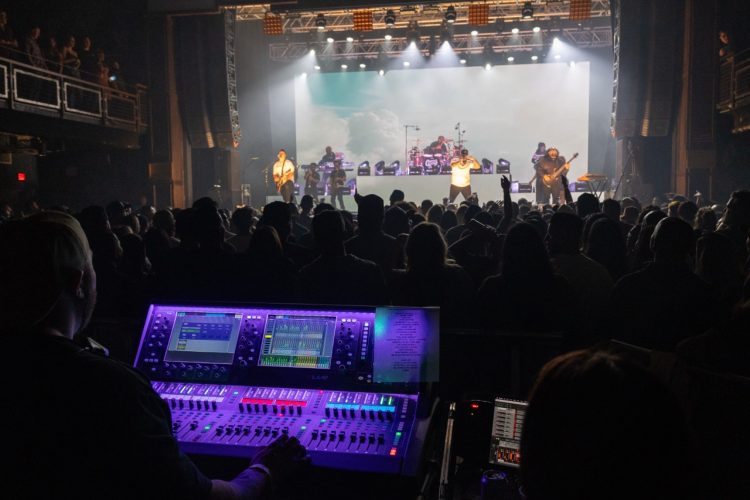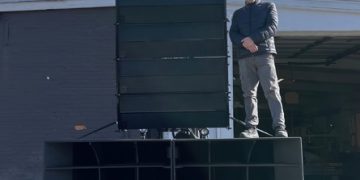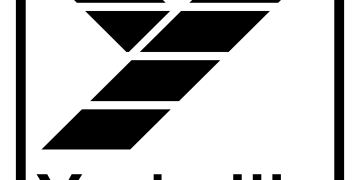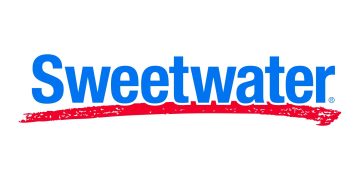The Grammy-nominated Common Kings have toured with A-list artists like Justin Timberlake, Bruno Mars, and Meghan Trainor – headlining shows and festivals worldwide. Audio engineer Tim Koch started working with the California-based Reggae group about four years ago, mixing some of their local events between tours. “I’ve been fortunate to be asked back as the band continues to grow,” said Koch. “We’ve done some killer shows together. I’ve worked with them as an A2, monitor engineer, and occasional FOH as well.”
Common Kings recently hosted a “takeover” event at The House of Blues in Anaheim, CA – with the band hosting three separate shows in three different rooms within the venue for three consecutive days. The multi-room event proved to be an enormous technical hurdle, but nothing beyond what Koch and the team could handle. “It took a huge amount of effort from the whole team,” explained Koch. “I was brought in to mix front of house for the VIP experience in The Parish room. I also helped with the build and rehearsal in the main concert hall for the full production show.” After the main show, the band also hosted an after party set in the Foundation room.
Everyone on the takeover production team had previously worked with Common Kings, from the touring crew, to local support, to video, to lighting and backline. “That weekend was an all-hands-on-deck scenario to make sure the workload was distributed and ensure success in all parts of the venue,” explained Koch.
All performances during the takeover event were mixed on Allen & Heath‘s flagship dLive series consoles, which Koch has developed an affinity for. “I’ve been a dLive user since 2020,” explained Koch. “This is the first run with Common Kings that I’ve been able to mix on the platform. I was thrilled to learn that the entire House of Blues Takeover would be mixed exclusively on dLive consoles.”
Koch especially appreciates dLive’s modularity, and being able to seamlessly transition his workflow between dLive surface models without making sacrifices to channel or bus count. “Common Kings can operate as a 4-piece, 6-piece, and 12-piece when adding the horn and backup vocalists to the mix,” he explained. “I love that I’ll always have advanced processing like a primary source expander or a multiband compressor on every channel – whether my show is 64 inputs or 20 inputs. I also feel like I’m able to work incredibly fast on dLive, which is important when you have so many musicians on stage.”
Koch is also a fan of dLive’s newest RackUltra FX upgrade – a recently released hardware module that enables 8 additional next-generation FX racks with dedicated sends and returns. “I’ve been getting a ton of use out of the new Spaces Reverb and Plate Designer,” said Koch. “I love that you can enable or bypass the post processing when loading the effects. We don’t often get a ton of time to sit and play with reverb settings, so it’s nice to load up a preset and have a more polished sound out the gate. If I do want to make tweaks, it lets me go back in later and fine tune the verbs to my liking. I’ve also been a fan of inserting the Saturator on drum inputs for additional color.”
Koch notes that the Reggae genre poses some unique mixing challenges. “The biggest thing is keeping the low end of the bass big and consistent sounding,” he explained. “Particularly for the bass player, he likes a lot of sub synth and bass guitar in his IEM mix, but it can be overwhelming for the other musicians.” To tackle the low end, Koch relies on dLive’s built-in Dyn8 plugin – which is a combination Dynamic EQ and Multiband Compressor. “Dyn8 is perfect to tame that region in the band’s individual mixes while keeping the volume and dynamics more natural for the bass player.”
Also handling monitor mixes during the takeover was engineer Justin Lusignan, who had his hands full with the band’s 11 IEMS, plus tech packs and guest packs. “The Common Kings enjoy a very clean studio style of in-ear mixing,” noted Lusignan. “Every band member wants something different in their IEMS. I love using dLive specifically for its ease of use and the setup time. I don’t ever find myself feeling like I’m getting overwhelmed by requests during sound checks or setup. The dLive workflow is second-to-none in my opinion, and that’s what keeps bringing me back to the platform.”
The House of Blues’ main concert hall utilized an analog split into CDM64 and DM64 dLive MixRacks, each with their own S5000 control surface for front of house and monitor mix positions. The monitor desk fed 16 stereo IEM units and 3 wedge mixes for the performers, as well as side fills.
The Parish room VIP show made use of dLive’s Multisurface feature, with a single dLive CDM48 MixRack feeding an S3000 surface at front of house and a C3500 at monitors.
Finally, the Foundation room relied on a simplified setup, with a CDM48 MixRack and a compact C1500 surface for the DJ and after party band sets.
“I don’t think I could have mixed this show without dLive,” said Koch. “The multiple layers of processing allowed me to carve out low frequency buildup in a tough room – leaving me to focus on what’s important in my mix.”



























Looking Back on 2025: A Year of Controlled Chaos (Emphasis on “Controlled”)